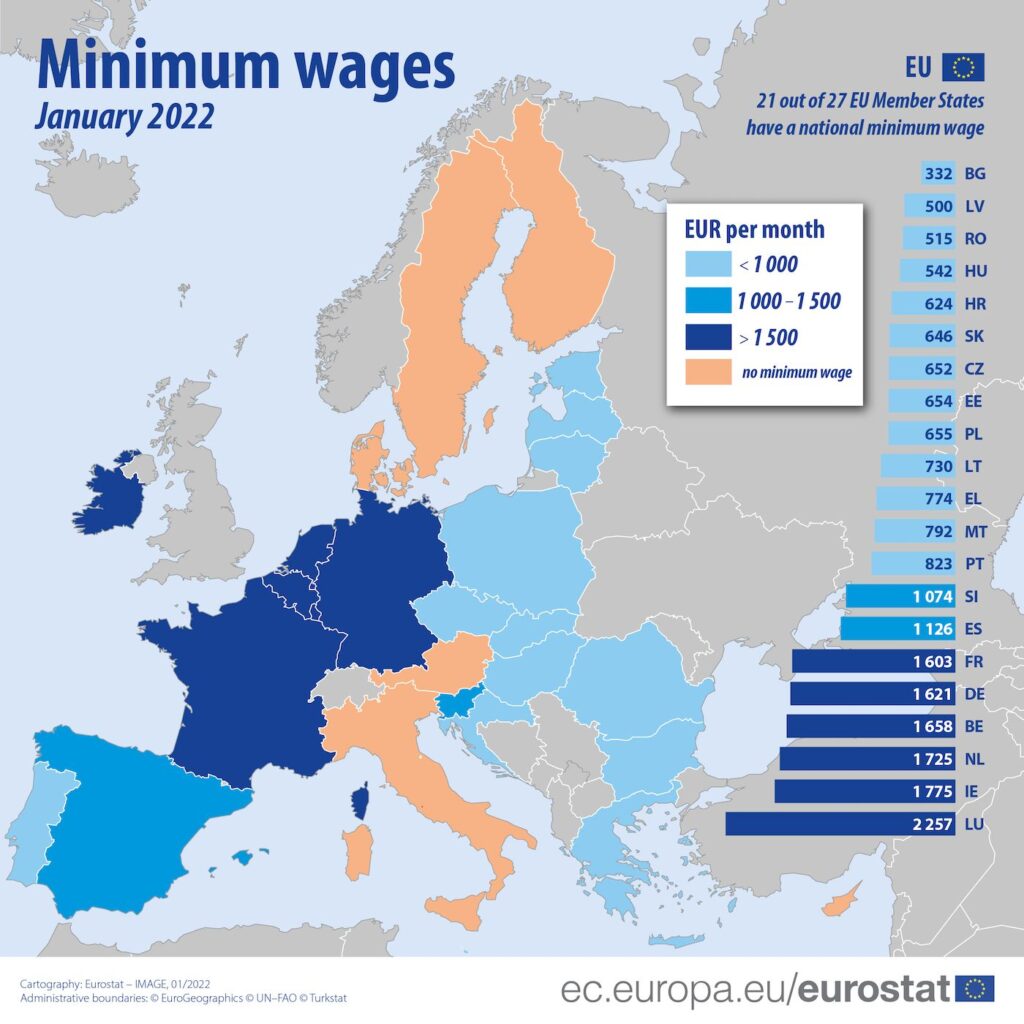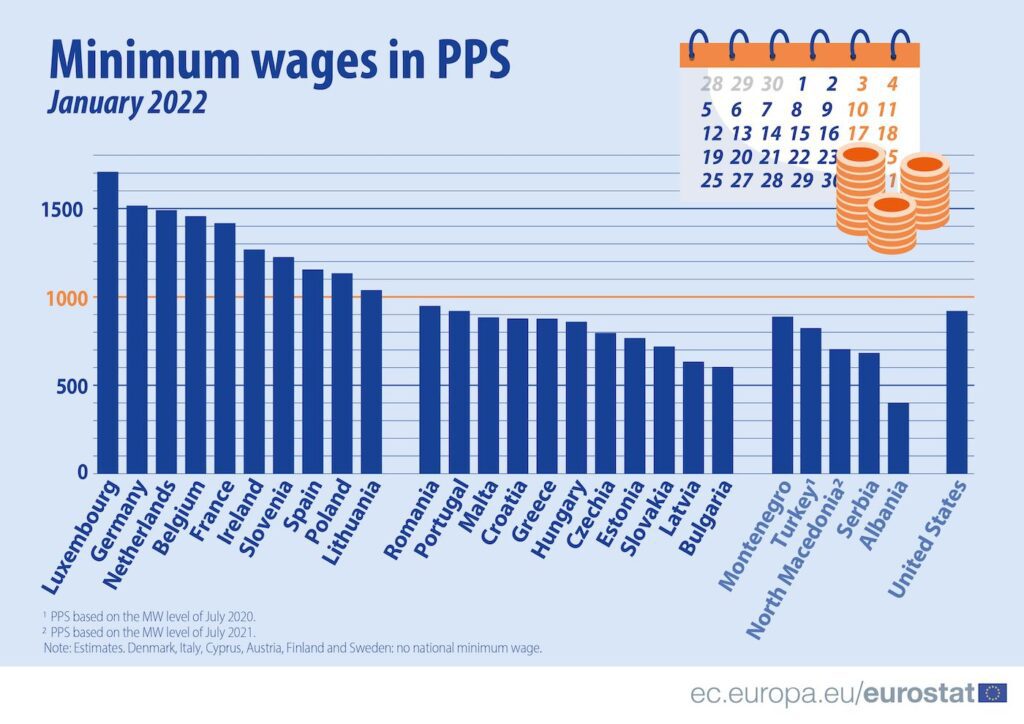Eurostat data on EU minimum wages
As of January 1, 2022, 21 of the 27 EU member states have national minimum wages. Exceptions are Denmark, Italy, Cyprus, Austria, Finland and Sweden. Based on their levels in euro, these 21 Member States can be divided into three main groups.
Monthly minimum wages below EUR 1,000 – in 13 EU countries, above EUR 1,500 – in 6 countries
The 21 EU Member States that have national minimum wages can be divided into three main groups based on their levels in euros.
In January 2022, 13 Member States located in the eastern and southern parts of the EU had minimum wages* below EUR 1,000 per month: Bulgaria (EUR 332), Latvia (EUR 500), Romania (EUR 515), Hungary (552 EUR), Croatia (624 EUR), Slovakia (646 EUR), Czech Republic (652 EUR), Estonia (654 EUR), Poland (655 EUR), Lithuania (730 EUR), Greece (774 EUR), Malta (792 EUR) and Portugal (823 EUR).
In Slovenia (EUR 1,074) and Spain (EUR 1,126) minimum wages varied slightly above EUR 1,000 per month, while in the remaining six Member States minimum wages were above EUR 1,500 per month: France (EUR 1,603), Germany (€1,621), Belgium (€1,658), Netherlands (€1,725), Ireland (€1,775) and Luxembourg (€2,257).
By comparison, in January 2022 the federal minimum wage in the United States was EUR 1,100.
This information comes from the data on minimum wages published by Eurostat on January 28 of this year.

Smaller differences in minimum wages once differences in price levels are removed
In the analyzed group of 21 Member States, the highest minimum wage is almost 7 times higher than the lowest. However, the differences are significantly smaller once differences in price levels are taken into account. When expressed in purchasing power standards (PPS), minimum wages in Member States with lower price levels become relatively higher than those in Member States with higher price levels.
By removing price differences, minimum wages range from 604 CPS per month in Bulgaria to 1,707 CPS in Luxembourg, meaning that the highest minimum wage is almost 3 times higher than the lowest. Based on this, it is possible to distinguish two main groups: group 1 with a national minimum wage above 1000 CPS and group 2 with a national minimum wage below 1000 CPS.
Group 1 includes Luxembourg, Germany, the Netherlands, Belgium, France, Ireland, Slovenia, Spain, Poland and Lithuania. Their national minimum wages range from 1,038 CPS in Lithuania to 1,707 CPS in Luxembourg. While Group 2 includes Romania, Portugal, Malta, Croatia, Greece, Hungary, Czech Republic, Estonia, Slovakia, Latvia and Bulgaria. The national minimum wages for this group range from 604 SPS in Bulgaria to 949 SPS in Romania.
All candidate and potential candidate countries with a national minimum wage belong to Group 2, with minimum wage levels ranging from 401 PPS in Albania to 888 PPS in Montenegro. The United States (SPC 920) belongs to Group 2.

* Before deduction of any taxes and social security contributions





